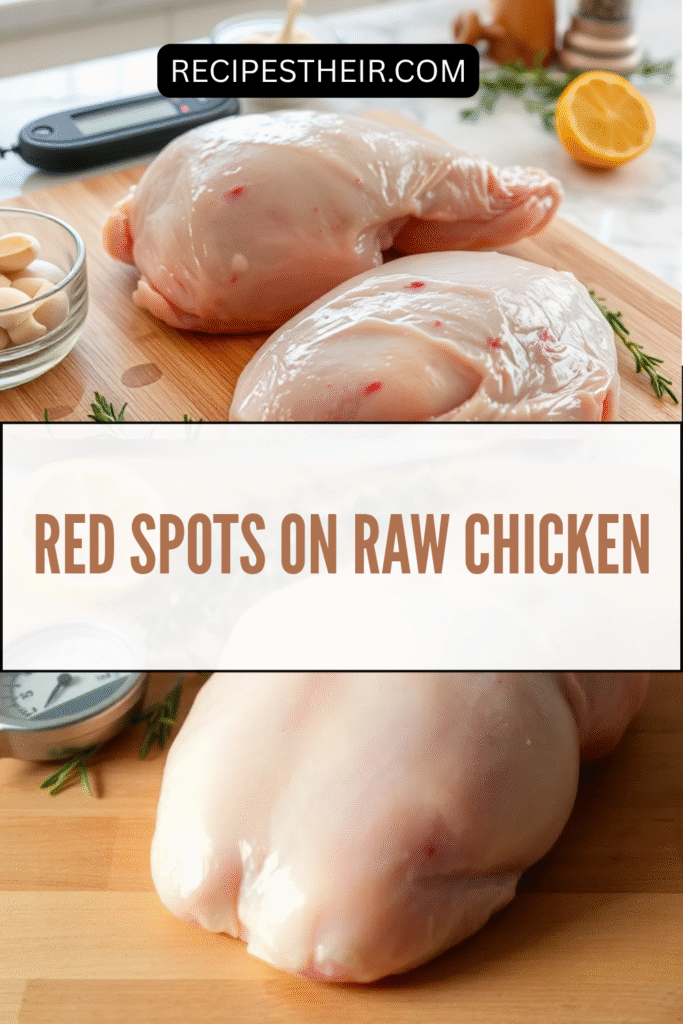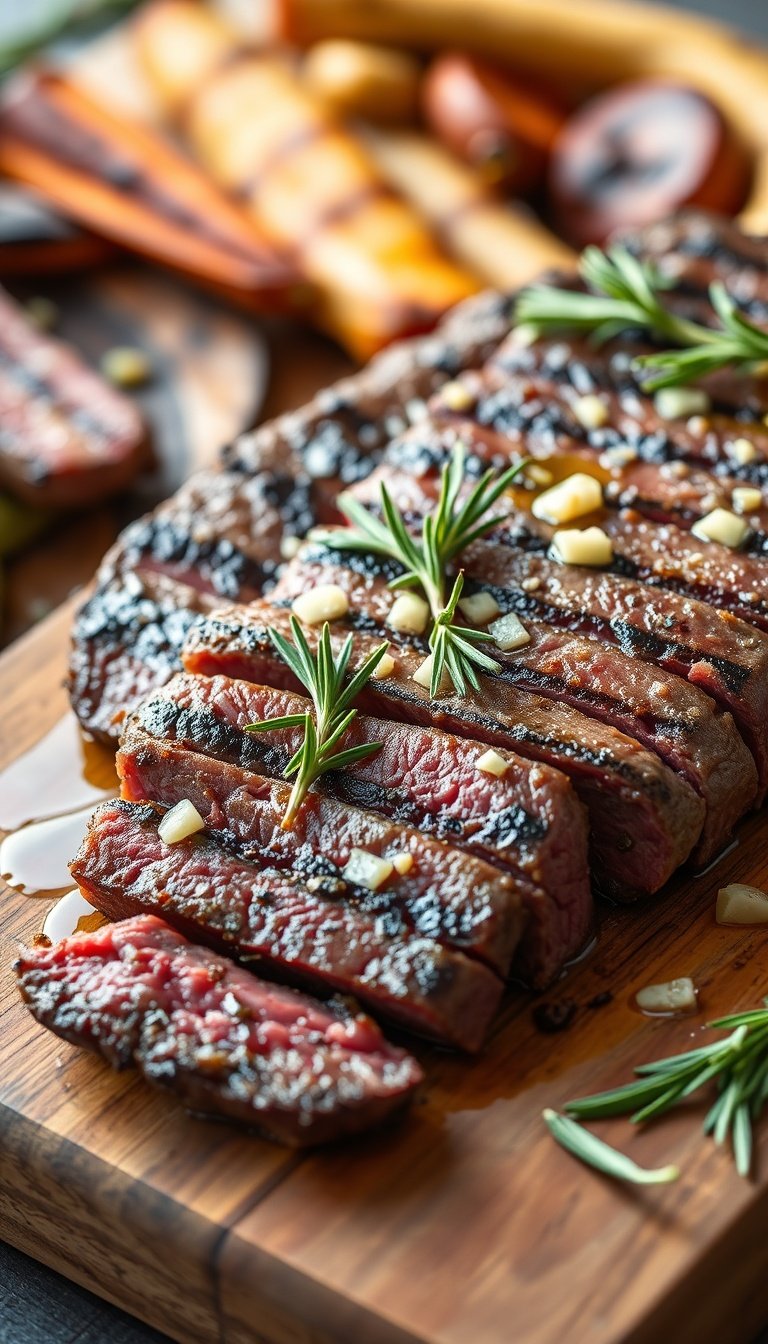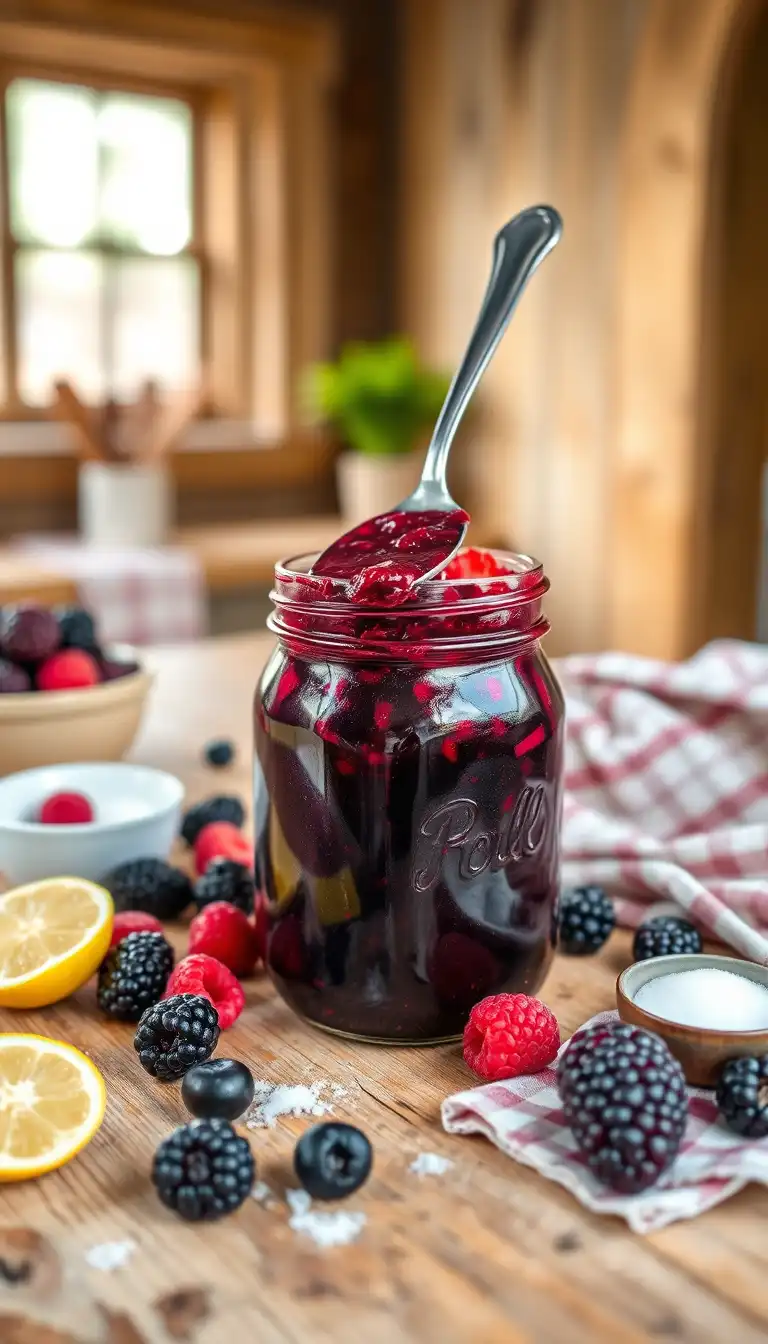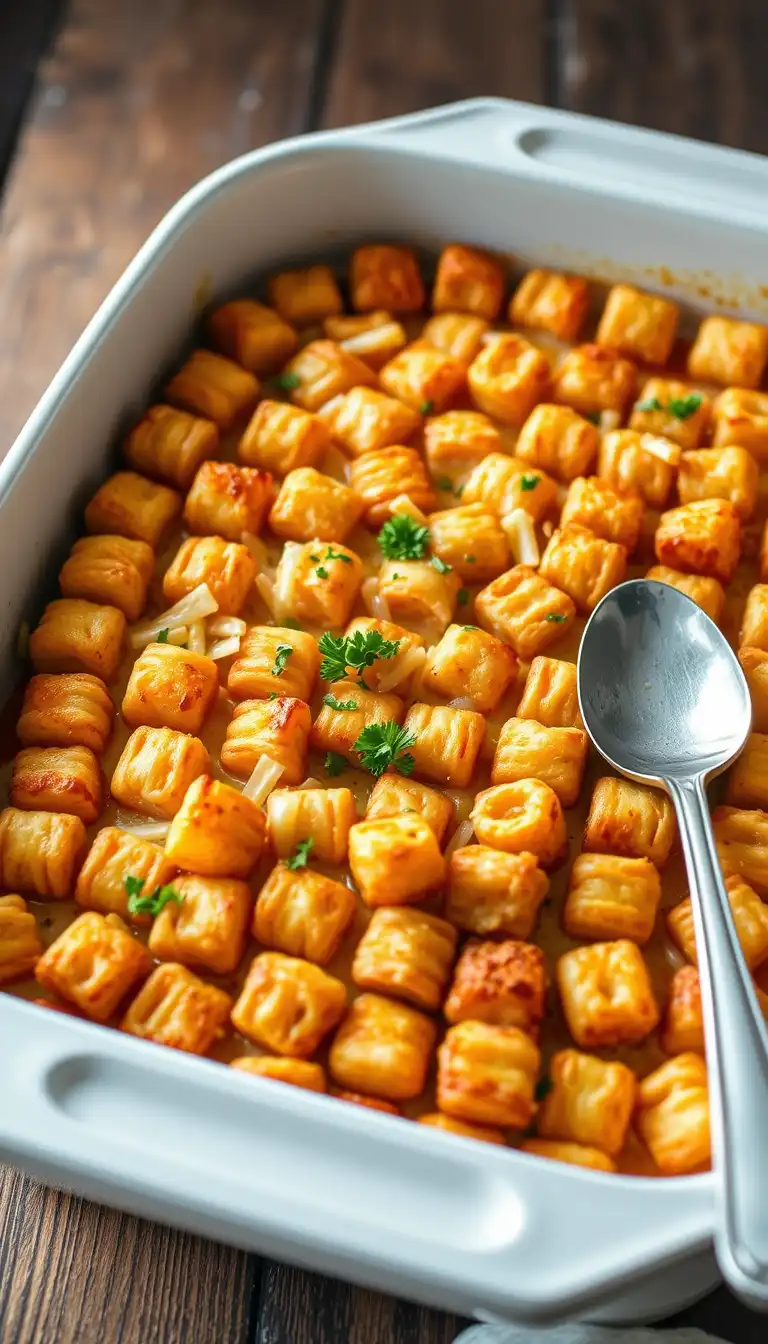Red Spots on Raw Chicken: Is It Safe to Eat?
If you’ve ever unwrapped a pack of raw chicken only to discover red spots or patches on the meat, you’re not alone. It’s a common concern that leaves many home cooks wondering, “Is this safe to eat?” Whether you’re prepping for a Sunday roast or a quick weeknight stir-fry, understanding what’s normal and what’s not in raw poultry is essential for both food safety and peace of mind.
In this guide, we’ll break down why red spots appear on raw chicken, what they mean, whether you can still cook it, and how to prevent buying questionable chicken in the future.

What Do Red Spots on Raw Chicken Mean?

Red spots on raw chicken usually appear as small red or dark blood-colored areas, and they can show up on the skin, muscle tissue, or bone. These discolorations are typically due to broken capillaries, bruising during processing, or leftover blood vessels that were not fully drained during slaughter.
Common Causes of Red Spots:
- Bruising: Chickens, like other animals, can get bruised during transport or handling. These bruises can appear red, purple, or even black.
- Broken Blood Vessels: During processing, capillaries can rupture, leaving behind red patches under the skin.
- Blood Clots or Bone Marrow Leaks: Sometimes red or pink hues near the bone are simply bone marrow pigment, not undercooked meat or contamination.
- Incomplete Bleeding During Slaughter: In some cases, the chicken might not have been completely bled out, resulting in retained blood in tissue.
Is Chicken with Red Spots Safe to Eat?
In most cases, yes, chicken with red spots is still safe to eat—as long as it has been properly stored, smells fresh, and is cooked to the right temperature. The USDA considers minor red spots or blood residues harmless if the meat is thoroughly cooked.
When Is It Not Safe?
If your chicken also shows any of the following signs along with red spots, you should discard it:
- A foul or sour smell
- Sticky, slimy texture
- Green or grayish discoloration
- Past the use-by date
- Excessive liquid pooling with an off-color
Always err on the side of caution when it comes to raw poultry.
How to Tell If Chicken Has Gone Bad (Even With Red Spots)
To determine if raw chicken is still good despite red spots, check for the following:
| Check | What to Look For |
|---|---|
| Smell | Should be neutral or slightly meaty, not sour or rotten |
| Color | Pale pink or white; no green/gray hues |
| Texture | Firm to the touch, not sticky or slimy |
| Packaging | Vacuum-sealed or airtight, with no leaks |
If it passes all these tests, it’s likely fine to cook—even with red spots.
Tips to Avoid Red Spots in Raw Chicken
Although harmless in most cases, many people find red spots off-putting. Here’s how you can reduce your chances of buying spotted or bruised chicken:
- Buy from reputable butchers or grocers with high-quality control standards.
- Choose air-chilled chicken—this process tends to minimize bruising.
- Avoid packs with excess liquid or dark-colored spots visible through the packaging.
- Look for USDA-inspected labels to ensure safety protocols.
Can You Remove Red Spots Before Cooking?
Yes, you can trim or rinse off many red spots:
- Use a sharp knife to remove discolored areas.
- Rinse the meat under cold water (briefly).
- Pat dry with paper towels before seasoning or marinating.
However, avoid over-washing raw chicken to prevent cross-contamination in your kitchen.
Cooking Chicken with Red Spots – Best Practices

The best way to ensure red-spotted chicken is safe to eat? Cook it to an internal temperature of 165°F (74°C). This kills all harmful bacteria regardless of appearance.
Easy Garlic Herb Chicken Breast Recipe
If your chicken has red spots but passes the freshness test, try this foolproof, flavorful recipe to make it delicious!
Ingredients:
- 2 boneless, skinless chicken breasts
- 2 tablespoons olive oil
- 1 tablespoon lemon juice
- 3 garlic cloves, minced
- 1 teaspoon dried oregano
- 1 teaspoon thyme
- Salt and pepper to taste
Instructions:
- Preheat oven to 400°F (200°C).
- In a bowl, mix olive oil, lemon juice, garlic, and herbs.
- Place chicken in a baking dish, brush with marinade, and let sit for 15 minutes.
- Bake for 20–25 minutes or until the thickest part reaches 165°F on a meat thermometer.
- Let rest for 5 minutes. Serve with rice or roasted vegetables.
This recipe helps mask visual imperfections and creates a golden, juicy finish that everyone will enjoy.
Red Spots After Cooking – Is That Normal?
Sometimes red or pink spots remain even after cooking—especially near the bones. This is often due to myoglobin, a natural protein in muscle tissue, or bone marrow pigment leaching into the meat.
If your thermometer says 165°F (74°C) and the juices run clear, it’s perfectly safe to eat, even if a little red remains.
FAQs About Red Spots on Raw Chicken
Q: Do red spots mean the chicken is undercooked?
A: Not always. On raw chicken, they’re usually from bruising or broken capillaries. On cooked chicken, they can result from bone marrow seeping out, especially in young chickens.
Q: Can I eat chicken that has small red dots on the skin?
A: Yes—if it smells fine, is within its use-by date, and you cook it properly.
Q: Should I return chicken with red spots?
A: If you’re uncomfortable with it or suspect spoilage, returning it is reasonable. However, most stores consider minor red spots normal unless there are additional spoilage signs.
Q: Can I freeze chicken with red spots?
A: Yes, freezing is safe. Just use it within 6 months and thaw it properly before cooking.
Final Thoughts: Red Spots on Raw Chicken Are Usually Harmless
While they may not look appealing, red spots on raw chicken are common and usually safe if the chicken is fresh and cooked properly. Understanding why these spots appear—and how to handle them—helps you avoid unnecessary food waste and cook with more confidence.
Remember: Trust your senses, use a thermometer, and cook to 165°F. That’s your best defense against foodborne illness, red spots or not.





